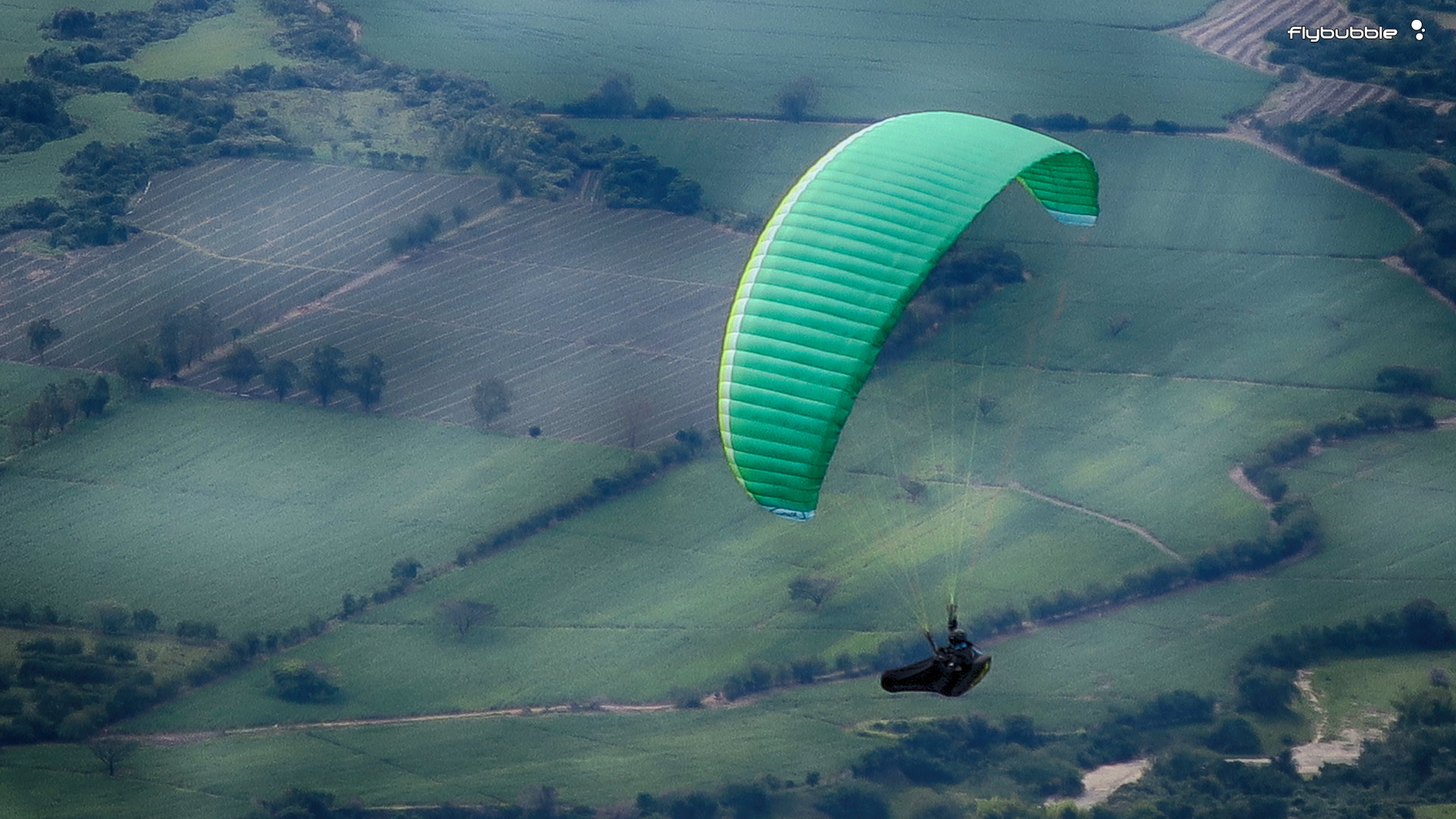
The Nova ION 5 replaces the very successful ION 4 in a very popular position in the marketplace – a wing that appeals to pilots in the cross-over between school and solo flying. As such it can’t have any ‘hot’ characteristics that would frighten students, but it must offer enough control freedom to satisfy more experienced pilots and have enough performance to begin XC adventures. The ideal compromise is hard to achieve. I tested the wing in sporty spring conditions in the UK, and added Carlo’s experience from XC flying in unusually mellow thermals in Colombia.
Nova ION 5: Construction
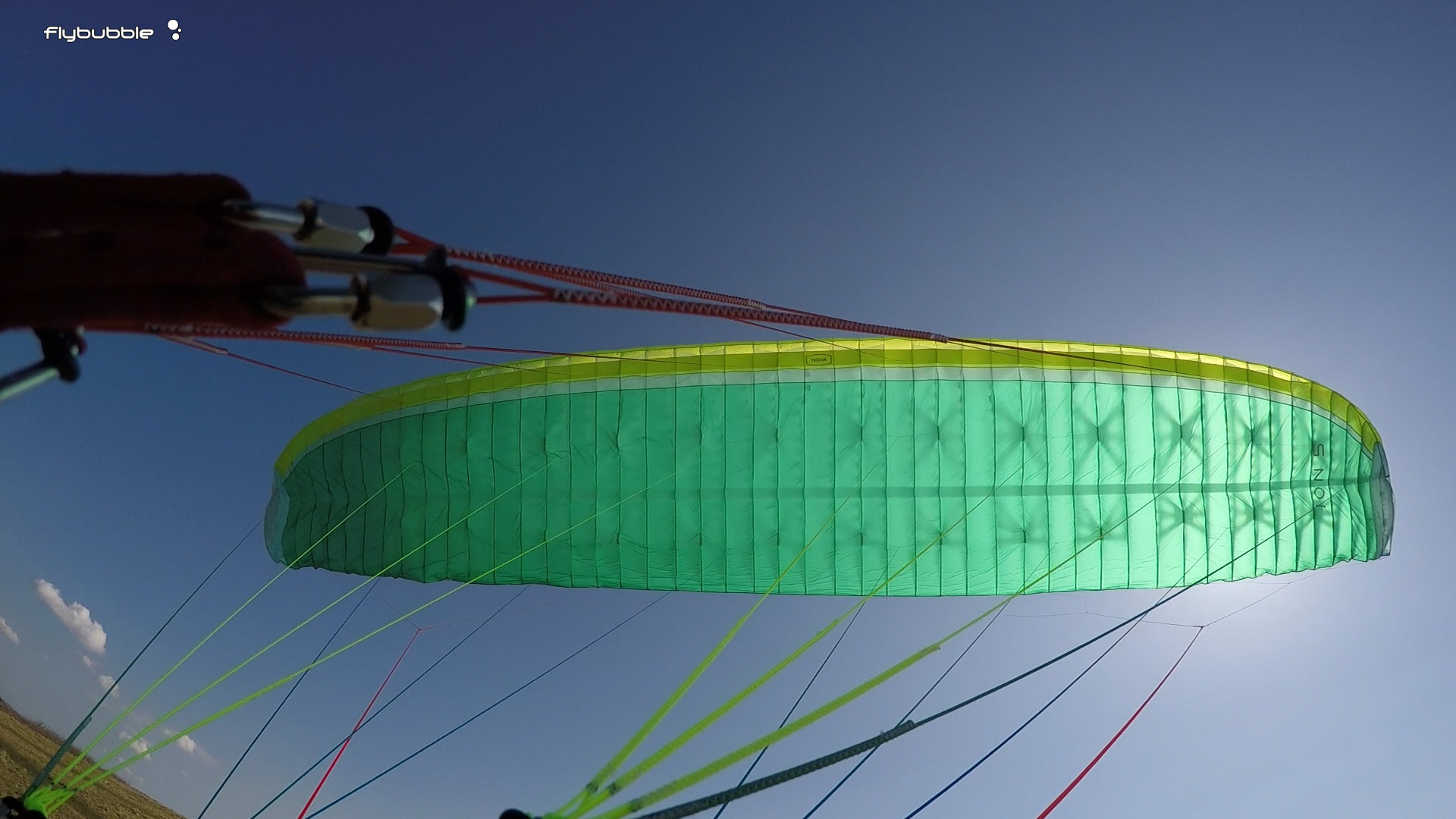
Aimed to become “the ultimate versatile paraglider” it uses semi-light construction and comes in at 4.65kg (S) despite having durable Dominico 30D cloth (41 g/m2) along the leading edge. The cells are wide and simply reinforced, the lines are beautifully colour-coded and the manufacturing is to modern standards, which means that I can’t fault it with my naked eye.
The cell widths have been adapted to the load, which helps the wing to fly more smoothly and provide better glide.
Nova ION 5: Groundhandling
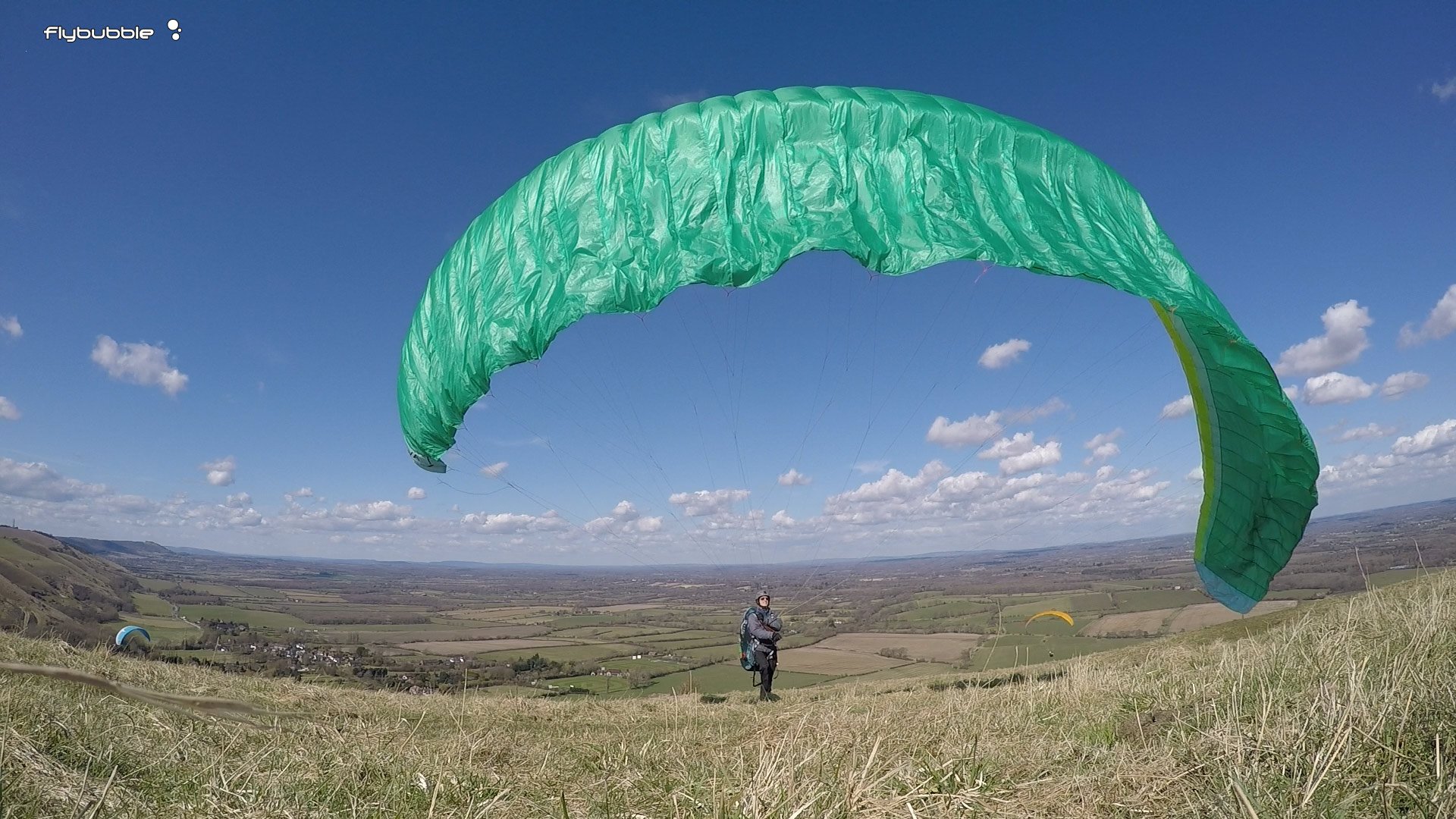
Stepping off the Omega Xalps 2 (EN D, aspect ratio 7.05) onto the Nova Ion 5 (EN B, aspect ratio 5.16) really highlights the differences between the classes. Whereas high performance wings demand constant attention and quick reactions on the ground, the ION 5 stays where you want it to, rises as a single block, and settles back down to the ground if not being actively pulled up from low angles. If pulled too hard the nose stalls and protects the pilot from a dangerous acceleration. If it’s put over on a wingtip it just waits until you guide it back overhead. It doesn’t shoot ahead of the pilot on launch, and needs no special technique. You can pull it up no-handed, even in light conditions. That’s what you’re wanting in the low B ‘suitable for use in schools’: easy handling, and no surprises.
Nova ION 5: in the air
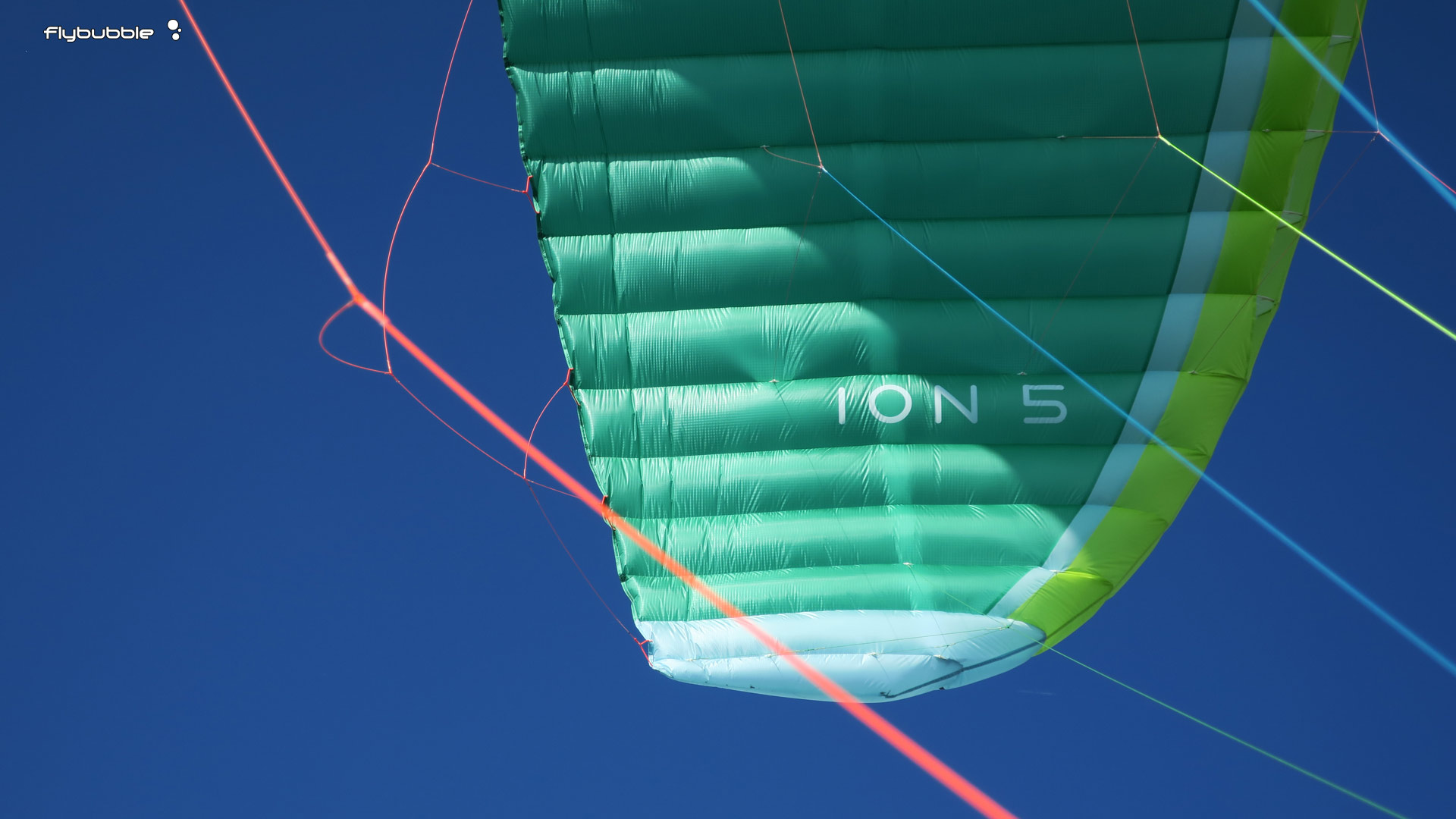
I flew the S (80-100kg) at only 86kg. Although the ideal weight is probably somewhere north of 90kg (the ideal size for me is the XS, 70-90kg), I often test wings at random points in the certified weight range because ballast interferes with the feeling and I like to push a wing into unusual places to see if anything is highlighted. The handling usually tightens up with added weight, giving you more brake authority and less of a feeling of being ‘knocked around’ by the wing in turbulence. I compensate for this effect when making comments on a wing.
Nova ION 5: Feedback
The wing absorbs a lot of the air movements and has low feedback. I found myself relying more on ‘logic’ and less on ‘intuition’ while searching for thermals, and this matches the ability of the ideal pilot. When you begin the long apprenticeship to mastering thermal flying, you have zero intuition because you don’t yet know how to identify the feelings you are getting. So in a sense, this is wasted information to provide to a beginner pilot. The ION 5 removes this from the equation. You need to go to where you think the lift will be, and when the vario beeps, you turn on it.
For more experienced pilots, there is a little feedback that comes through, but it's very subdued.
Nova ION 5: Handling
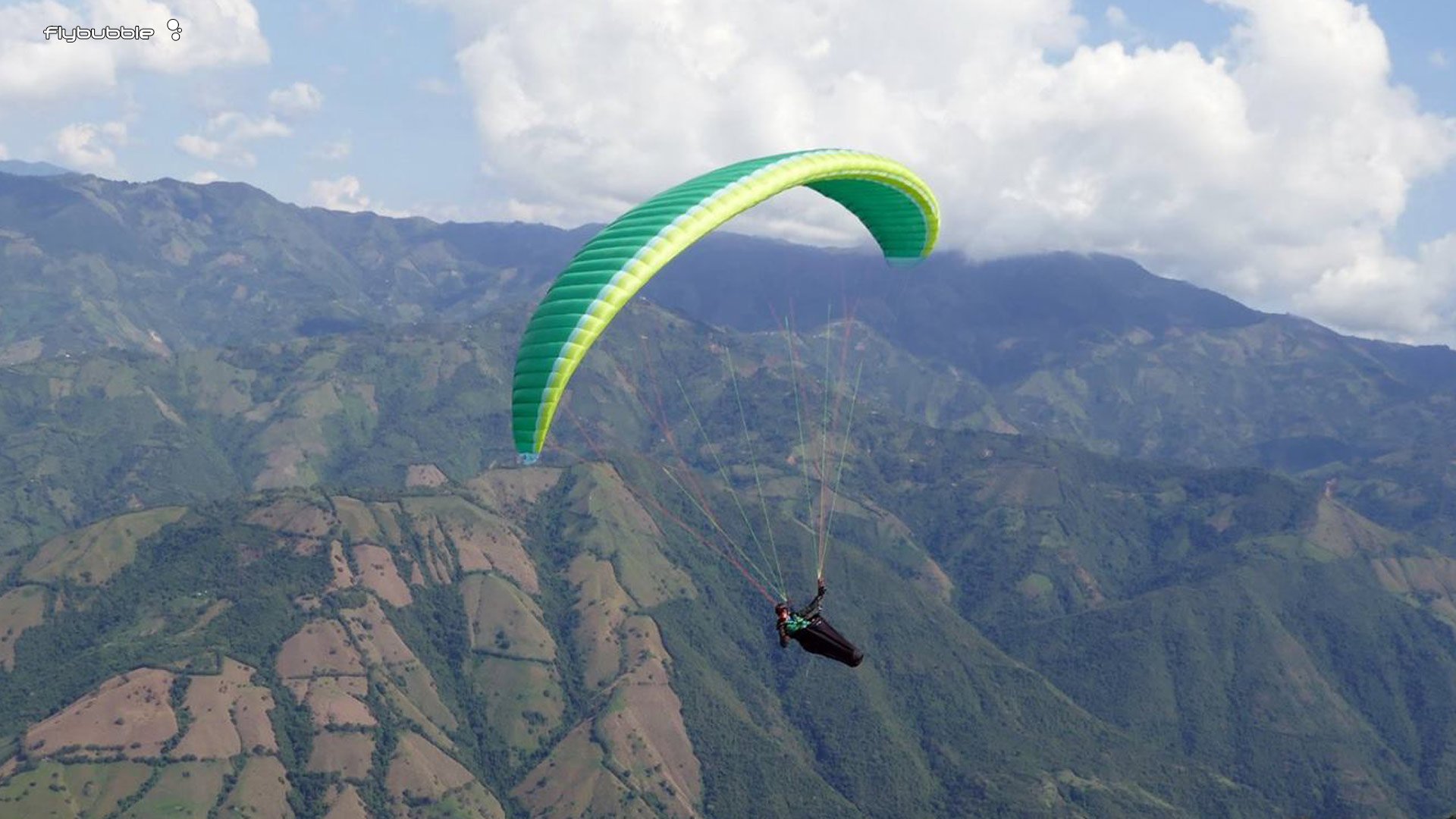
Another marked contrast to the high aspect wings is the turn radius – because the low aspect wing has a small wingspan, if it's combined with responsive brake rigging you get a tight turn that can give you an advantage over ‘lumbering hotships’. If nothing else, it will mean you can easily match the thermaling radius of the traffic, and when you get an opportune strike, you can hook it and twist up and away. They’ll catch you on the glide, but climbing well will build confidence.
The feeling was like racing around on a go kart, with fast direction changes and no retained energy (swooping out of a turn). In punchy conditions and strong air, this wing will make you grin. Probably less so in light floating downwind XC, where delicate circles and high feedback win the day. Ultimately, climb performance comes from the pilot reacting quickly to the vario beeps: the wing will respond quickly to input so you can grab hold of small cores.
Nova ION 5: Big ears
Nothing much to say, they go in easily, they come out slowly, you don’t have to fight them to stay in, you can accelerate. Perfect.
Nova ION 5: Stability
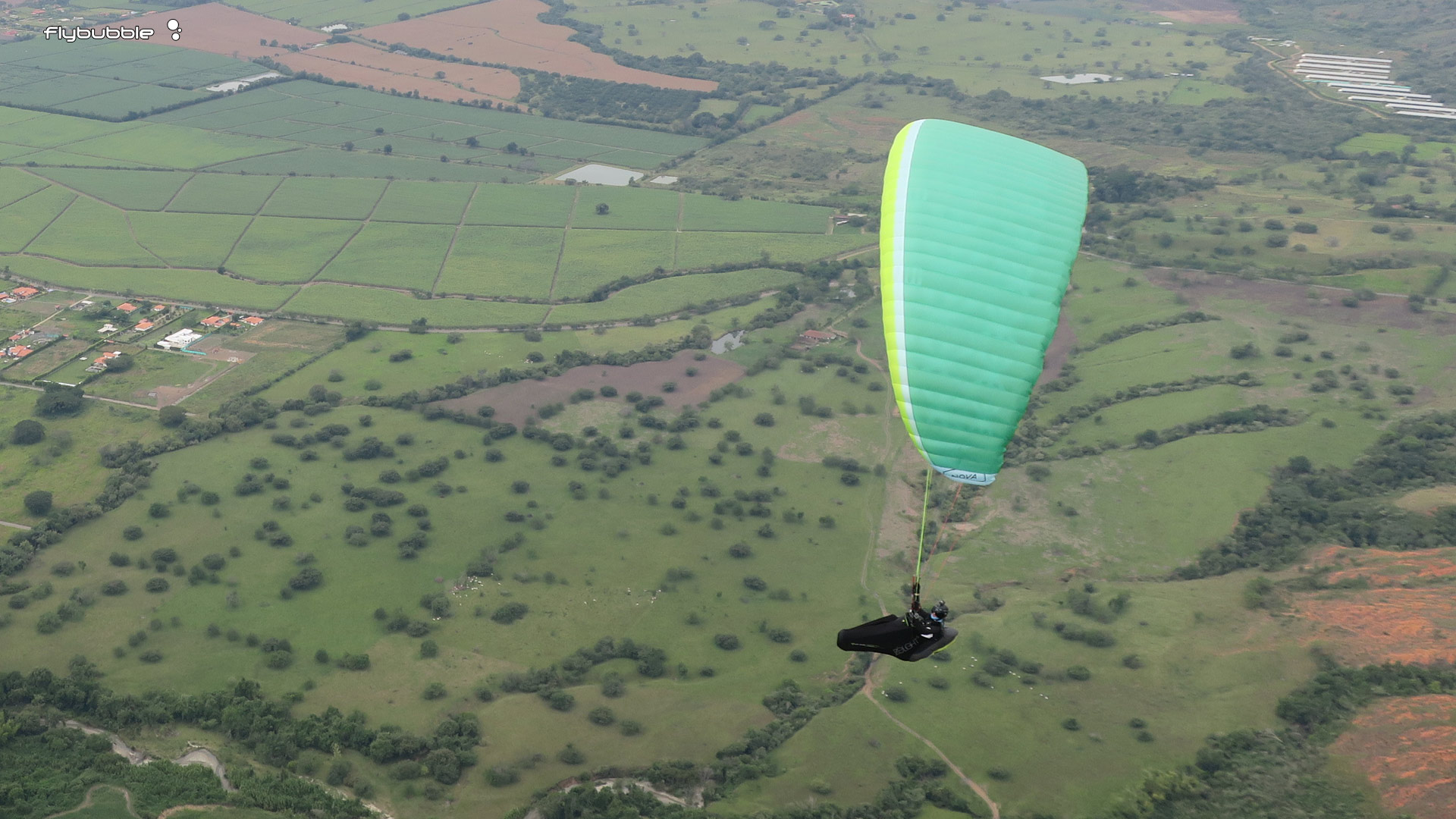
Flying in sporty air along the seabreeze convergence line, I know some other higher class wings would have given me a tip tuck or two. The ION 5 was unaffected by the turbulence. It is highly limited in pitch, so even when dropping into chunks of heavy sink, the lines unloaded but the wing did not dive forward. I never needed active flying inputs to dampen out pitch movements. On the roll axis, it is more active, but as you only have one kind of motion to think about and the controls are light and direct, it’s easy to manage.
Because the brake travel is relatively short, and the response is high, care needs to be taken on tight turns. It is possible to spin the wing with heavy input, although this mostly becomes a spiral turn with quick acceleration (which protects the pilot somewhat but can be quite alarming). It is also possible to stall the wing with your hands at your hips (after a long delay of high pressure slow flying) – less protection than some other wings in this class. Here I would advise caution when considering this wing for students or newly licenced pilots who are ‘not naturally talented’. Beginner pilots can often use too much brake when overshooting their landing. Take care on the ION 5! You don’t need to use big brake inputs, it is very responsive.
Nova ION 5: Speed
The speed is average for the class, and if you’re becoming a regular XC pilot this is one aspect where you might consider upgrading to get Mentor or even Sector speeds. The trim speed is consistent with the ‘low B’ (Progression class) which means you’ll be roughly the same as most club members if you’re in the upper part of the weight range. Fully accelerated, the wing is solid and has good glide, but due to a limited speed increase (less than 10km/h) I had no chance to push upwind against a seabreeze – you’ll want to go for distance downwind.
Nova ION 5: Carlo’s comments
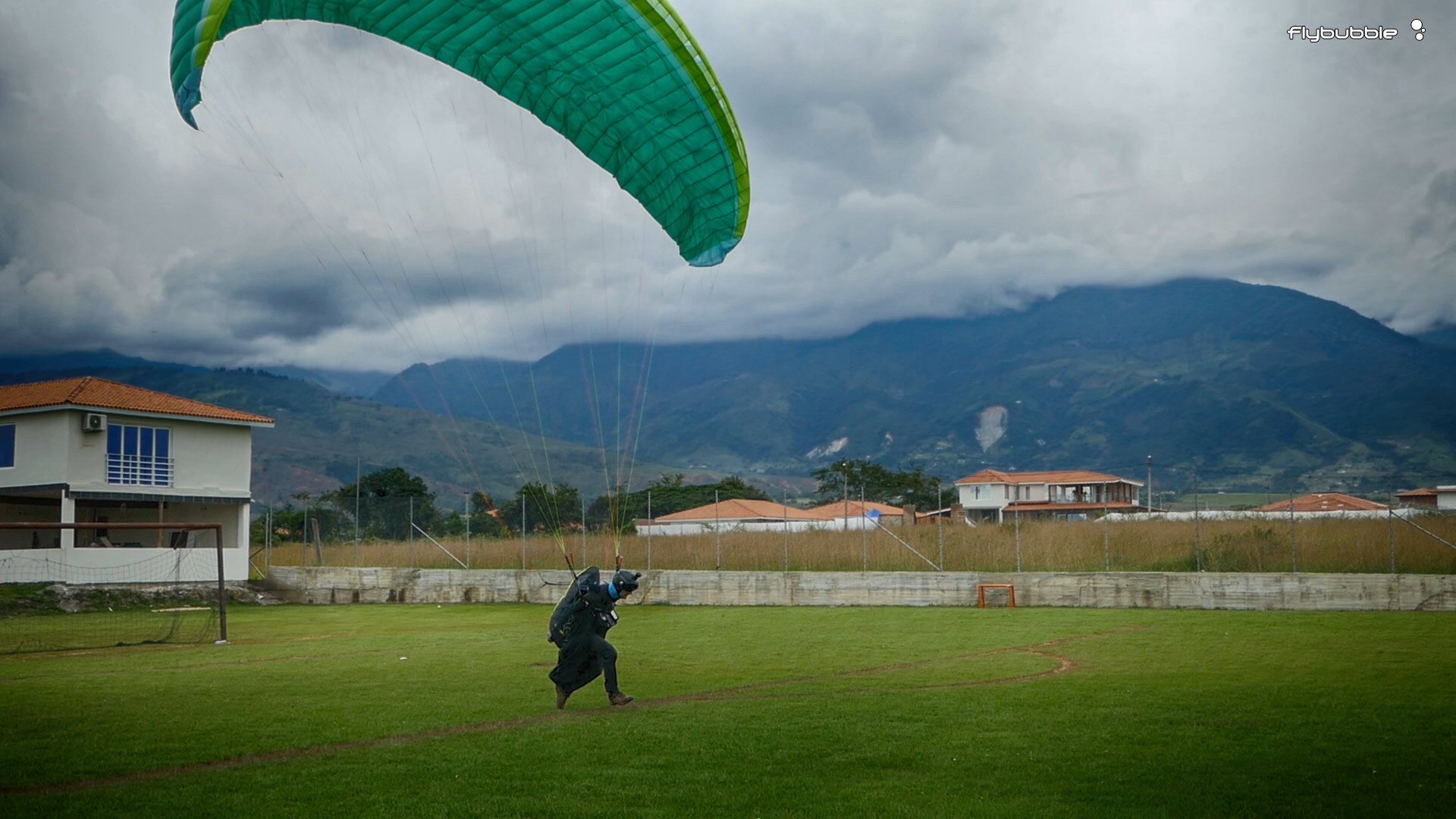
"The ION 5 is more agile than its predecessor, the ION 4. It's nippier, you can turn it tighter. It’s also more rolly, I needed to check it with the outside brake at times.
I found the ION 5 had a nice level of feedback for the class. The pitch never goes beyond about 30 degrees, so it’s very reassuring in rough air.
When I first tried some wingovers on the ION 5, I was suprised - it's really quite fun! It requires a bit of sensitivity to not over-input on turns and landing.
Asymmetrics and full frontals were very well behaved with the ION 5, it felt more like an EN A wing in this regard.
I'd put the ION 5 as 'low B' in terms of overall pilot demands.
It has very good climb and glide, but the trim speed is not particularly quick - competitive for the class.
I was thinking 'wow, this is actually a very nice fun glider to fly for its class, very reassuring without being too dull and dampened.'
Overall the ION 5 has a very good balance of handling and passive safety, and good performance for the low B class."
Nova ION 5: Who’s it for?
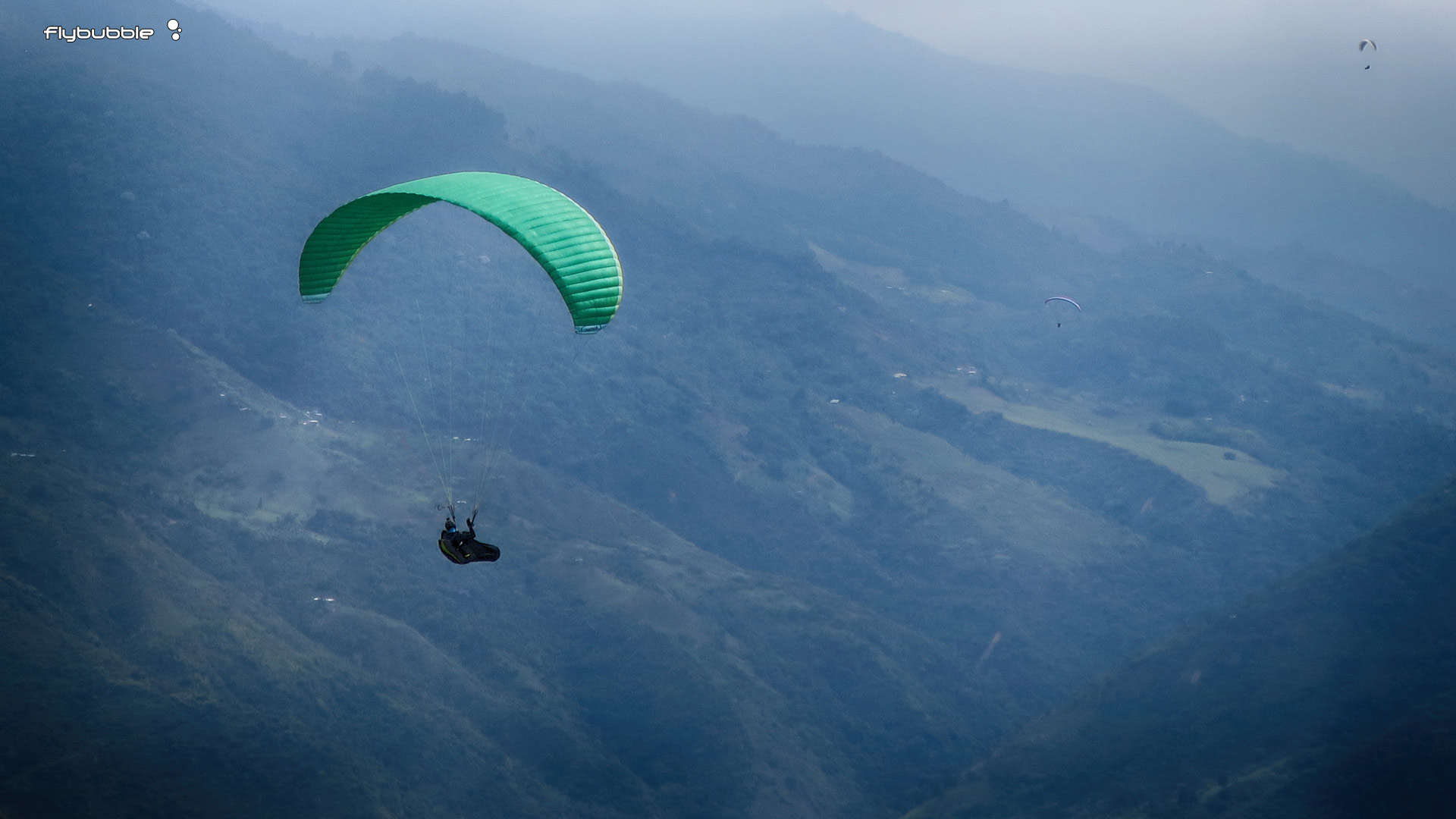
As NOVA says ‘It is a fun wing which turns like a dream, a cross-country machine, a tutor and a gentle acrobat all in one. It is suitable for gifted beginners as well as experienced pilots with cross-country ambitions.’ That’s about as spot on as you can be with a glider description.
If you have gnawing doubts about your ‘high B’ (XC class) wing and want complete confidence in any air, the ION 5 will allow you to concentrate on making good piloting decisions instead of worrying about wing management. If on the other hand, you’re itching to leave your dull school training wings behind and your instructor agrees that you have a good feel for what you’re doing, then the ION 5 will set you free. The sky is not the limit … it’s the beginning of exciting adventures!
Find out more about the Nova ION 5
Thanks to Action Air Sports and Timm Asprion for images
Nova ION 5: Review video
The ION 5 is put through its paces in the sea breeze convergence on the south coast of England.
Want to see more?
There's no better way to support our efforts than buying kit from us. We'll ensure you get great service! Choose from our huge range AND enable us to produce more videos and articles to benefit the freeflight community.

